 September 13, 2018 John E. Ross, KD8IDJ, Editor
| ||||||
ARRL Headquarters Emergency Response Team Activates for Florence The ARRL Headquarters Emergency Response Team activated on September 12, as what the National Hurricane Center (NHC) is calling "dangerous Hurricane Florence" continued to close in on the southeastern US coast, where it's "expected to bring life-threatening storm surge and rainfall to portions of the Carolinas and Mid-Atlantic states."
ARRL shipped seven Ham Aid kits to South Carolina by way of Georgia on September 11 to assist with emergency preparedness needs in advance of Hurricane Florence. These kits are the same ones that ARRL volunteers took to Puerto Rico a year ago to assist with disaster communications following Hurricane Maria. ARRL is staging HF and VHF/UHF equipment in the Maryland/Virginia area for deployment locally or farther down the coast. "South Carolina ARES is fully activated," ARRL South Carolina Section "We are literally modifying plans on the fly to meet the needs of the mission," Irwin added. "Several ARRL Sections have offered assistance." W1AW Suspending Bulletin and Code Practice on September 14 As part of the ongoing communication efforts with Hurricane Florence, Hiram Percy Maxim Memorial Station W1AW will suspend its regular bulletin and code practice transmissions on Friday, September 14. The station will resume its normal operating schedule on Monday, September 17. Radio amateurs are reminded to avoid the various Hurricane Watch Net (HWN) and SATERN frequencies, as well as any state and regional emergency nets, to help facilitate communications that may be necessary during the Hurricane Florence response. Hurricane Watch Net, WX4NHC The Hurricane Watch Net (HWN) has been closely monitoring three systems -- Hurricane Florence, Tropical Storm Isaac, and Hurricane "Hurricane Florence is drawing a lot of concern for its size and strength, but more so for the potential flooding," Assistant HWN Manager Stan Broadway, N8BHL, said. WX4NHC at the National Hurricane Center will remain active through Friday, September 14, operating cooperatively with the HWN as net stations funnel "ground-truth" reports to the Center. WX4NHC will monitor the HWN and the VoIP Hurricane Net (VoIPWX) on EchoLink Conference WX-Talk, node 7203 or IRLP 9219. As of 1800 UTC on September 13, the NHC said Florence was some 110 miles east-southeast of Wilmington, North Carolina, and about 270 miles east of Myrtle Beach, South Carolina, with maximum sustained winds of 105 MPH, moving to the northwest at 10 MPH. SATERN The Salvation Army Team Emergency Network (SATERN) activated for Hurricane Florence from 1700 through 2100 UTC on SATERN may extend its activation depending on reports of major damage, especially to the communications infrastructure; continued significant emergency, priority, or health-and-welfare traffic, as well as reports of an increased need for auxiliary communication. The net's primary mission will be the receipt and delivery of outbound health-and-welfare messages from affected areas. The Salvation Army is beginning to stage personnel and equipment in major deployments to North Carolina and Virginia. SHARES The Department of Homeland Security's SHARES will maintain watch on its Northeast Region (FEMA Regions 1, 2, and 3) and Southeast Region (FEMA Region 4) nets starting at 2100 UTC on Thursday, September 13, and on its National Net channels starting at 1200 UTC on Friday, September 14. Tropical Storm Olivia The ARRL Pacific Section has been preparing for activation to support a response to Tropical Storm Olivia. SKYWARN volunteers in Hawaii are supporting the National Weather Service for Olivia. ARRL deployed seven Ham Aid HF kits to Hawaii for Hurricane Lane, and these will remain in Hawaii through the remainder of the hurricane season. Amateur Radio operators on Guam are active supporting response to the Super Typhoon Mangkhut, which is expected to strike the Philippines. AO-92 to Image Hurricane Florence AMSAT-NA has announced plans for AO-92 (Fox-1D) to attempt to image Hurricane Florence. AMSAT Vice-President of Operations, Drew AO-92 will not be in U/V FM voice transponder operation during these passes, and ground stations should not attempt to access AO-92 during this period. The high-speed image data will be transmitted on a downlink frequency of 145.880 MHz and can be captured, decoded, and uploaded to the Fox-1 data warehouse using FoxTelem version 1.06 software. IARU Administrative Council Meeting Focuses on WRC-19 Preparation The International Amateur Radio Union (IARU) Administrative Council (AC) held its annual face-to-face meeting September 8 - 9 in Seoul, Korea, immediately prior to the IARU Region 3 Conference. The AC is responsible for the policy and management of the IARU and consists of the three IARU international officers and two representatives from each of the three IARU regional organizations.
Given these challenges, the AC reviewed its strategic plan to develop support for amateur spectrum allocations and approved the action plan for the rest of 2018 and 2019. Delegates reviewed and adopted the IARU 2019 - 2021 budget, which depends upon anticipated financial contributions from the IARU International Secretariat and the three regional organizations. The AC agreed to maintain its modest annual financial support of the Beacon Project. ARRL President Rick Roderick, K5UR, reported consensus on nominating incumbent President Tim Ellam, VE6SH, and Vice President Ole Garpestad, LA2RR, for additional terms. These nominations will be submitted to the IARU member-societies for ratification.
The growth of Amateur Radio -- and especially how to attract young people -- is a common concern of IARU member-societies. The AC will endeavor to identify barriers to growth that the IARU can assist member-societies in addressing and will encourage member-societies to share successful growth strategies. The IARU policy on QSL bureaus has been under review for several years in light of escalating expenses and the problem of unwanted and undeliverable QSL cards as an environmental concern. Possible policy amendments are being developed for consideration. Attending the meeting were IARU President Tim Ellam, VE6SH/G4HUA; Vice President Ole Garpestad, LA2RR; and Secretary David Sumner, K1ZZ, along with regional representatives Don Beattie, G3BJ; Hans Blondeel Timmerman, PB2T; Reinaldo Leandro, YV5AM; Ramón Santoyo, XE1KK; Gopal Madhavan, VU2GMN, and Peter Young, VK3MV. Observers included regional executive committee members Jay Bellows, K0QB; Ken Yamamoto, JA1CJP, and Don Wallace, ZL2TLL. President Roderick and Bellows are also on hand for the 17th International Amateur Radio Union (IARU) Region 3 Conference, hosted by the Korean Amateur Radio League (KARL), which continues until September 14 in Seoul. ARRL is representing the interests of FCC-licensed radio amateurs in Region 3 living in various Pacific territories, including Guam and American Samoa.
KARL reported that to promote the hobby, an entry-level license (ELL) has been introduced as the fourth Amateur Radio license class in Korea. Obtaining this license requires participating in 8 hours of tutoring beginners in Amateur Radio. License holders will be allowed to operate on VHF/UHF bands with up to 10 W output. CRAC reported that China's Amateur Radio population is expanding steadily, with slightly more than 130,100 licensees and an estimated 80,000 active station licenses. The Chinese Class C license, held by only 626 individuals, is the highest license in China, permitting 1 kW on HF and 25 W above 30 MHz. The conference report "Amateur Radio for Kids" by Julie Gonzales, VK3FOWL, and Joe Gonzales, VK3YSP, suggested that engaging youngsters at an early age in radio and electronics should be about more than recruiting or licensing. Region 3 conference documents are available on the IARU Region 3 website. The Doctor Will See You Now! "Tools for the Amateur Station" is the topic of the new (September 13) episode of the "ARRL The Doctor is In" podcast. Listen...and learn!
Every 2 weeks, your host, QST Editor-in-Chief Steve Ford, WB8IMY, and the Doctor himself, Joel Hallas, W1ZR, will discuss a broad range of technical topics. You can also email your questions to doctor@arrl.org, and the Doctor may answer them in a future podcast. Enjoy "ARRL The Doctor is In" on Apple iTunes, or by using your iPhone or iPad podcast app (just search for "ARRL The Doctor is In"). You can also listen online at Blubrry, or at Stitcher (free registration required, or browse the site as a guest) and through the free Stitcher app for iOS, Kindle, or Android devices. If you've never listened to a podcast before, download our beginner's guide. US ARDF Team Tops its Own World Championships Medal Count in Korea Team USA took home 10 medals from the just-concluded 2018 Amateur Radio Direction Finding (ARDF) World Championships, the highest medal count since the US team began participating in the international event 20 years ago. The 19th World ARDF Championships took place September 2 - 8 near the resort city of On September 4, the first day of competition, the US won its first medal of this year as Ruth Bromer, WB4QZG, captured individual 3rd place in the W60 category in the 80-meter foxoring competition. The next day, the team's M50 competitors -- Vadim Afonkin, KB1RLI; Nicolai Mejevoi, and Bill Wright, WB6CMD -- won bronze medals in the classic 2-meter team competition. That same day, the team of Ken Harker, WM5R -- the Team USA Captain and the new International Amateur Radio Union (IARU) Region 2 ARDF Coordinator -- and Joe Burkhead won bronze in the M40 category on 80 meters. Team awards are based on the aggregate scores of individual team members, who are not permitted to assist one another on the courses.
Afonkin took an individual gold medal for his 1st-place finish on 80 meters in the M50 category. In the same event, the M50 category team of Afonkin, Mejevoi, and Wright came away with bronze medals in the 80-meter team competition. This marked the second time that ARDF Team USA had competed in Korea. Before traveling to the competition, a weekend training camp for Team USA members and other ARDF enthusiasts took place August 10 - 12 at Mt. Pinos in the Los Padres National Forest of California. Complete results of the 2018 ARDF World Championships are posted on the Deutscher Amateur Radio Club website. For more information on ARDF, visit the Homing In website of US/ARRL ARDF Coordinator Joe Moell, K0OV. Follow ARDF Team USA on Facebook. Colorado Club Supports Make-A-Wish Foundation Trailblaze Challenge The Park County Radio Club (PCRC) in Colorado (AB0PC) provided communication assistance for the first Colorado Make-A-Wish Trailblaze Challenge fundraiser hike on August 11. The hike took place on Segments 2 and 3 of the Colorado Trail, totaling 23.7 miles. The elevation at the start of the Challenge hike was 6,112 feet, reaching 8,290 feet at the highest point for a total elevation gain of PCRC members provided communication between the start, the five aid stations, and the finish. The PCRC VHF repeater near Bailey, Colorado, provided coverage along the entire trail. A net control station was established to monitor all trail communications and, if necessary, to contact local emergency services. Fortunately, the only medical needs throughout the entire day were caring for a few blisters. Ducie Island VP6D DXpedition, Other Pacific Operations on Target The VP6D Ducie Island DXpedition is set to get under way October 20 and continue until November 3. According to Jacky Calvo, ZL3CW, the equipment, already en route, has been loaded aboard the M/V Braveheart in New Zealand. The Braveheart sets sail for Tahiti in late Elsewhere, from September 29 until October 6, Martin Wennergren, A65DC, and friends will operate from Christmas Island as VK9XT. They plan to be on 160 through 10 meters, excluding 60 meters, kicking things off with the CQ World Wide RTTY Contest for the first 48 hours, with SSB and CW on non-contest bands, then CW, SSB, and RTTY on HF, using FT8 "only when no other operation is happening or on bands that are opening or closing," they've said. VK9XT logs will go to LoTW and Club Log. Stan Vatev, LZ1GC, is heading to Samoa and will be on the air by September 28 as 5W0GC. He'll meet other operators for the YJ0GC operation from Vanuatu, set to begin on October 15. Logs will be uploaded to LoTW. HF operation will concentrate on 160 and 80 meters. More details are on the 5W0GC/YJ0GC website. -- Thanks to The Daily DX Two 40-Meter Broadcast Intruders Gone, IARU Region 1 Monitoring System Reports The IARU Region 1 Monitoring System (IARUMS) reports that two long-time broadcast intruders on 40 meters are gone. IARUMS Coordinator Wolf Hadel, DK2OM, said in the August IARUMS newsletter that Radio Hargeisa in the Republic of Somaliland on 7.120 MHz, and Radio Ethiopia on 7.140 MHz, departed the band during the last week of August.
"We did not miss them," he commented. IARUMS did report increasing military traffic on 7 and 14 MHz, "especially on digital modes from Russia and China." In addition, a wideband over-the-horizon (OTH) radar in China has caused serious problems on 20 meters, while an Iranian radar on 28.860 MHz "could be heard under sporadic E conditions." German telecommunications authorities have filed a formal complaint. Hadel said a Russian Navy system believed to be in Moscow appeared on 7.182 MHz on F1A, a 200 Hz shift, identifying as RDL. German telecommunications authorities were notified. Hadel also reported "childish behaviour" by hams in western and eastern Ukraine "insulting each other or playing music every day" on 7.055 MHz (LSB). Reports of amateur band intruders can be submitted via the IARU Region 1 Monitoring System Logger. In Brief...
The K7RA Solar Update Tad Cook, K7RA, Seattle, reports: Sunspot activity returned during the September 6-12 reporting week, with spots on 4 non-consecutive days, September 8 - 9 and 11 - 12. Average daily sunspot numbers increased to 7.6, compared to no spots over the previous 7 days. Average daily solar flux increased from 67.8 to 68.6, and planetary A index doubled from 6.3 to 12.6, while the mid-latitude A index went from 5.9 to 10.
The same forecast over the same period supposes planetary A index at 12, 8, 5, 10, 8 and 5 on September 13-18; 8, 5, 5, 12, and 8 on September 19 - 23; 5 on September 24 - 30; 8 and 10 on October 1 - 2; 5 on October 3 - 6; 12, 35, 15, 12, 12, 8, 5, 10, and 8 on October 7 - 15; 5 on October 16 - 18; 12 and 8 on October 19 - 20, and 5 on October 21 - 27. As recently as September 9, the US Air Force predicted a rise of solar flux to 75 on September 17 before dropping below 70, followed by flux values of 70 on October 7 - 9. Solar forecaster Tamitha Skov, WX6SWW, wrote on September 11 to say, "[W]e did reach G2-level storm conditions. In fact we remained at G2-levels for over 6 hours. This meant emergency communication over the Amateur Radio bands was non-existent. Luckily, it looks like the worst is now over." Sunspot numbers for September 6 - 12 were 0, 0, 16, 12, 0, 14, and 11, with a mean of 7.6. The 10.7-centimeter flux was 67.4, 67.5, 68.7, 68.4, 69, 69.4, and 69.7, with a mean of 68.6. Estimated planetary A indices were 6, 5, 5, 7, 21, 35, and 9, with a mean of 12.6. Estimated mid-latitude A indices were 5, 5, 5, 6, 15, 24, and 10, with a mean of 10. Share your reports and observations. Just Ahead in Radiosport
See the ARRL Contest Calendar for more information. For in-depth reporting on Amateur Radio contesting, subscribe to The ARRL Contest Update via your ARRL member profile email preferences. Upcoming ARRL Section, State, and Division Conventions
Find conventions and hamfests in your area
. .
Subscribe to...
Free of charge to ARRL members...
| ||||||

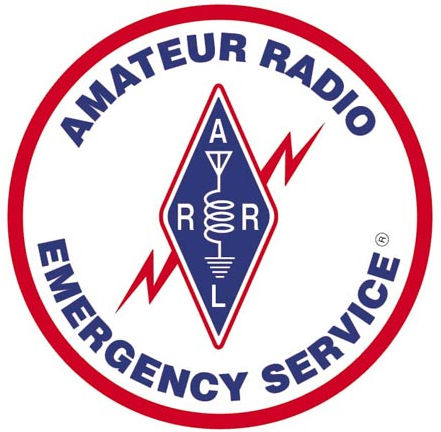 Emergency Coordinator Billy Irwin, K9OH, told ARRL, adding that he's been coordinating regularly with the state Emergency Management Division. "We have operators serving 12-hour shifts at the SC Emergency Management Division and will move to 24-hour coverage on Thursday. Two operators have been deployed to Berkeley County to assist with shelter operations at the request of the Emergency Coordinator there." Irwin said
Emergency Coordinator Billy Irwin, K9OH, told ARRL, adding that he's been coordinating regularly with the state Emergency Management Division. "We have operators serving 12-hour shifts at the SC Emergency Management Division and will move to 24-hour coverage on Thursday. Two operators have been deployed to Berkeley County to assist with shelter operations at the request of the Emergency Coordinator there." Irwin said 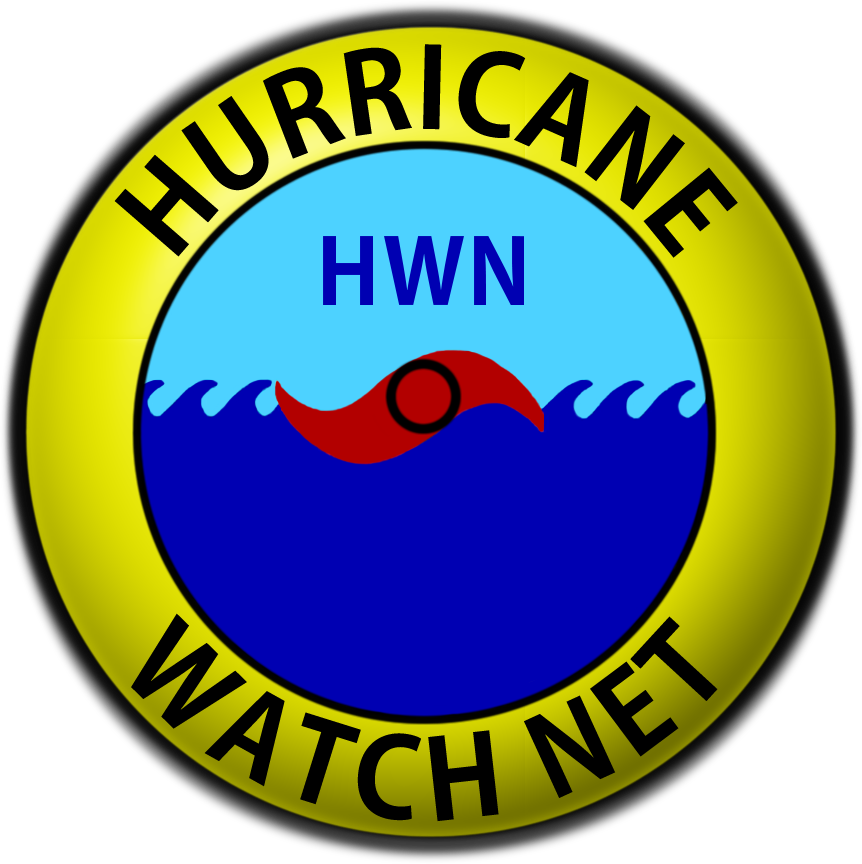 Helene. The net activated on September 13, at 1300 UTC on both its 14.325 MHz and 7.268 MHz frequencies and will remain active around the clock, as needed.
Helene. The net activated on September 13, at 1300 UTC on both its 14.325 MHz and 7.268 MHz frequencies and will remain active around the clock, as needed.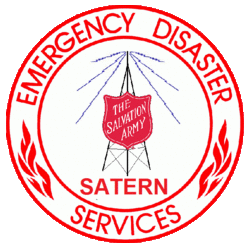 Thursday, September 13, on 14.265 MHz, with a backup frequency of 14.312 MHz. It will reactivate on Friday and Saturday at about 1600 UTC until propagation no longer supports it or the Net Manager closes the net for the day. A SATERN digital net will open on 14.065 MHz on the same schedule. The SATERN Souther Territory SSB Net will be open from 1300 UTC until 1700 UTC on 7.265 MHz on September 13 - 15.
Thursday, September 13, on 14.265 MHz, with a backup frequency of 14.312 MHz. It will reactivate on Friday and Saturday at about 1600 UTC until propagation no longer supports it or the Net Manager closes the net for the day. A SATERN digital net will open on 14.065 MHz on the same schedule. The SATERN Souther Territory SSB Net will be open from 1300 UTC until 1700 UTC on 7.265 MHz on September 13 - 15.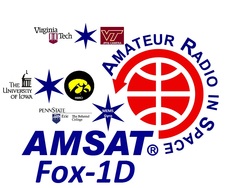 Glasbrenner, KO4MA, said this week that plans call for using the camera on AO-92 to try imaging Hurricane Florence during North American east coast passes on September 13 and 14.
Glasbrenner, KO4MA, said this week that plans call for using the camera on AO-92 to try imaging Hurricane Florence during North American east coast passes on September 13 and 14.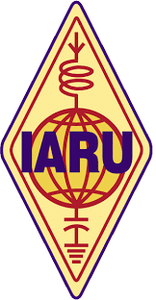 With International Telecommunication Union (ITU) World Radiocommunication Conference 2019 (WRC-19) now little more than a year away, the efforts of two dozen IARU volunteers to defend Amateur Radio's frequency allocations against commercial pressures and to seek worldwide harmonization of the 50 - 54 MHz band are reaching a critical stage. Coordination of the IARU team is ongoing during the run-up to the ITU Conference Preparatory Meeting in Geneva next February and WRC-19 itself in October and November. High on the list of concerns is what IARU called "the potential for crippling levels of interference to radiocommunications from high-power wireless power transfer (WPT) for electric vehicles."
With International Telecommunication Union (ITU) World Radiocommunication Conference 2019 (WRC-19) now little more than a year away, the efforts of two dozen IARU volunteers to defend Amateur Radio's frequency allocations against commercial pressures and to seek worldwide harmonization of the 50 - 54 MHz band are reaching a critical stage. Coordination of the IARU team is ongoing during the run-up to the ITU Conference Preparatory Meeting in Geneva next February and WRC-19 itself in October and November. High on the list of concerns is what IARU called "the potential for crippling levels of interference to radiocommunications from high-power wireless power transfer (WPT) for electric vehicles."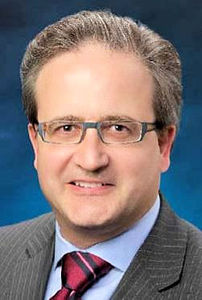
-Conference-Presentation.jpg)
 Sponsored by
Sponsored by  Sokcho, South Korea. Hidden transmitters were scattered in forests encompassing 1,000 acres or more. The US has been represented at every ARDF World Championships event since 1988, with competitions taking place every 2 years.
Sokcho, South Korea. Hidden transmitters were scattered in forests encompassing 1,000 acres or more. The US has been represented at every ARDF World Championships event since 1988, with competitions taking place every 2 years.
 2,178 feet from start to finish. The average grade along the trail is about 5%, but it exceeds 18% at some spots. Due to the remote location, terrain, and forest cover, cellular coverage is almost nonexistent. Make-A-Wish staff and volunteers were equipped with FRS radios that only provided short-range local communications.
2,178 feet from start to finish. The average grade along the trail is about 5%, but it exceeds 18% at some spots. Due to the remote location, terrain, and forest cover, cellular coverage is almost nonexistent. Make-A-Wish staff and volunteers were equipped with FRS radios that only provided short-range local communications. September, and the team of operators will catch up with the gear in Tahiti to begin their voyage to Ducie Island.
September, and the team of operators will catch up with the gear in Tahiti to begin their voyage to Ducie Island..JPG)
 Global Learn Day on the Air is aiming to shrink the world one contact at a time. Global Learn Day on the Air (
Global Learn Day on the Air is aiming to shrink the world one contact at a time. Global Learn Day on the Air ( The Amateur Radio Association of the Republic of San Marino (
The Amateur Radio Association of the Republic of San Marino ( Club Log's
Club Log's  Brazil radio amateurs are gaining three bands. Brazilian telecoms regulator Anatel
Brazil radio amateurs are gaining three bands. Brazilian telecoms regulator Anatel 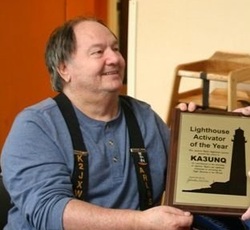 Amateur Radio Lighthouse Society (
Amateur Radio Lighthouse Society (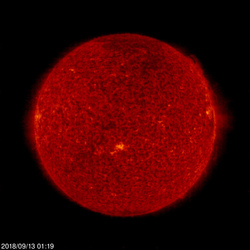 The September 12 forecast predicts solar flux at 70 on September 13 - 14; 68 on September 15 - 22; 67 on September 23 - 24; 68 on September 25 - October 6; 70 on October 7 - 9; 68 on October 10 - 19; 67 on October 20 - 21, and 68 on October 22 - 27.
The September 12 forecast predicts solar flux at 70 on September 13 - 14; 68 on September 15 - 22; 67 on September 23 - 24; 68 on September 25 - October 6; 70 on October 7 - 9; 68 on October 10 - 19; 67 on October 20 - 21, and 68 on October 22 - 27.







